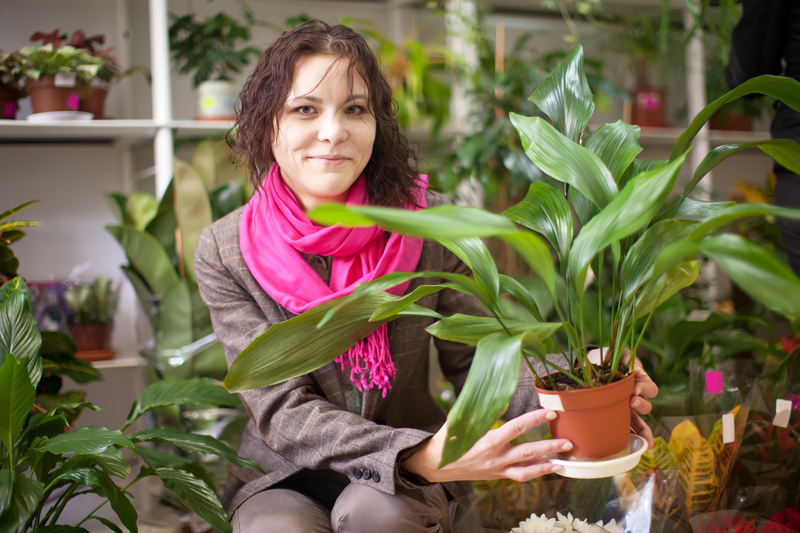Empowering Eco-Champions with Waste-to-Soil Practices
Posted on 06/06/2025
Empowering Eco-Champions with Waste-to-Soil Practices: Paving the Path to a Greener Future
Living sustainably is no longer a mere trend; it has evolved into a global movement of empowered individuals, eco-champions, who are reshaping communities and influencing the trajectory of our planet's well-being. At the frontlines of this green revolution lies a powerful practice: waste-to-soil. By transforming organic waste into fertile soil, this process not only combats landfill overflow and greenhouse gas emissions but also rejuvenates ecosystems and increases food security. In this comprehensive article, we will explore how empowering eco-champions with waste-to-soil practices can lead the way toward a regenerative, hopeful future.

Understanding Waste-to-Soil: What Is It?
Waste-to-soil is the process of converting organic materials--usually from kitchens, gardens, or agriculture--into nutrient-rich compost that can enrich and restore soils. Unlike chemical fertilizers, compost derived from this method is natural, sustainable, and environmentally friendly. This cycle supports the concept of a circular economy, where resources are continuously reused and waste is minimized.
- Organic Waste Diversion: Strategic separation of food scraps, plant trimmings, and other biodegradables from landfill waste streams.
- Composting: Controlled decomposition using bacteria, fungi, and other decomposers to break down organics into humus.
- Soil Amendment: Application of compost to enhance soil structure, fertility, and biodiversity.
By integrating these steps, waste-to-soil practices provide a solution for waste management while replenishing the Earth's most vital resource: its soil.
Why Empower Eco-Champions with Waste-to-Soil Practices?
Eco-champions are the change-makers, educators, and innovators in our neighborhoods, schools, and workplaces. Enabling these individuals with waste-to-soil techniques has profound impacts:
- Reduces Greenhouse Gas Emissions: Organic materials in landfills generate methane, a potent greenhouse gas. Composting instead captures carbon in the soil, turning a problem into a solution.
- Improves Food Security: Healthy soils grow healthier plants. Communities practicing waste-to-soil recycling can produce local, nutritious food with fewer chemicals.
- Boosts Biodiversity: Compost fosters healthy microbial life in soils, supporting a diverse ecosystem of insects, plants, and animals.
- Engages Community & Education: Waste-to-soil projects bring people together, fostering collaboration and environmental literacy.
- Reduces Landfill Waste: Diverting organics keeps heavy, wet materials out of landfills, extending their lifespan and improving municipal waste management.
In short, empowering eco-champions with composting and organic waste transformation skills creates ripples of positive change across multiple sectors.
The Science Behind Waste-to-Soil Practices
Composting is more than just a pile of rotting vegetables. This process relies on a delicate balance of browns (carbon-rich materials like dried leaves) and greens (nitrogen-rich materials like kitchen scraps), moisture, and oxygen. Microorganisms break down the materials, producing heat and eventually resulting in crumbly, dark compost.
Key Steps in the Composting Cycle
- Preparation: Collect kitchen and yard waste. Chop larger pieces to speed up decomposition.
- Layering: Alternate between browns and greens in your compost bin. Aim for a ratio of approximately 3:1 carbon to nitrogen.
- Moisture & Aeration: Keep the pile moist but not soggy. Turning or aerating the pile every 1-2 weeks ensures even decomposition and prevents odor.
- Monitoring: The pile will heat up as microbes work. Compost is ready when it's dark, crumbly, and has an earthy smell.
Empowering eco-champions with waste-to-soil know-how means teaching these scientific principles and troubleshooting common problems: excess moisture causing smells, a dry pile inhibiting breakdown, or not enough nitrogen slowing the process.
Spotlight: Community-Led Composting Initiatives
Around the world, communities are harnessing waste-to-soil solutions to make a measurable difference. These local projects are often spearheaded by passionate eco-champions--people who turn knowledge into action and inspire others to join the journey.
Case Studies: Waste-to-Soil Champions in Action
- Brooklyn's BK ROT (USA): Youth-led initiative collecting food scraps by bicycle and composting them locally. The finished product supports local urban farms and gardens, while empowering young leaders.
- Delhi's RWA Composters (India): Residential Welfare Associations install neighborhood-scale composters, reducing landfill-bound waste and providing organic fertilizer for community green spaces.
- Zero Waste Scotland's Community Projects: Educational programs guide neighborhoods, schools, and community centers through setting up waste-to-soil systems and tracking environmental benefits.
These examples highlight the impact of empowering eco-champions with waste-to-soil knowledge: not only do they divert tons of organic waste, but they also cultivate a culture of environmental stewardship.
How to Implement Waste-to-Soil Practices in Your Community
Ready to become an eco-champion by starting your own organic waste-to-soil journey? Here's a step-by-step guide:
1. Raise Awareness and Engage Stakeholders
- Educate your neighbors, coworkers, or students about the benefits of composting and soil health.
- Host workshops or film screenings on waste-to-soil solutions.
- Gather a group of local eco-champions committed to driving change.
2. Assess Organic Waste Sources
- Map out where organic waste is generated--homes, restaurants, markets, schools, or businesses.
- Estimate volumes to select the right compost system (backyard bin, community site, or even worm bins for apartments).
3. Choose the Right Composting Method
- Backyard Composting: Best for individual homes or small groups; simple and scalable.
- Community Composting: Shared bins, tumblers, or in-vessel systems for neighborhoods, schools, or businesses.
- Vermiculture (Worm Composting): Red wigglers transform food waste into rich worm castings, even indoors.
- Municipal Scale: Partner with local governments to develop industrial composting facilities.
4. Ensure Best Practices and Monitor Progress
- Establish drop-off points, collection schedules, and educational signage.
- Promote correct composting (balance of browns and greens, regular turning, no contaminants).
- Track results: tons of waste diverted, soil produced, gardens nourished, emissions reduced.
5. Apply and Share the Results
- Return finished compost to local gardens, farms, tree planting projects, or green spaces.
- Publish stories, hold "compost giveaways," and recognize volunteer eco-champions.
- Expand the movement--encourage other nearby communities to adopt waste-to-soil recycling.
Innovations in Waste-to-Soil: Technology and Beyond
The waste-to-soil revolution is being accelerated by new technologies and business models, making it easier for eco-champions to lead large-scale change.
- Smart Composting Bins: These IoT-enabled bins track moisture, temperature, and fill levels, automatically adjusting conditions for optimal decomposition.
- App-Based Education: Mobile apps train users on composting best practices, troubleshoot issues, and connect communities for waste-sharing networks.
- Biochar and Soil Inoculants: Adding biochar (charred organic matter) or beneficial microbes to compost can supercharge soil fertility and carbon capture.
- Blockchain Waste Tracking: Some startups are piloting blockchain systems to transparently track waste streams, compost production, and emissions reductions, ensuring accountability and scalability.
These innovations enable eco-champions to not only run more efficient projects but to demonstrate measurable impacts in their communities.
The Global Impact of Empowering Eco-Champions through Waste-to-Soil Practices
By mainstreaming waste-to-soil techniques, local action can add up to global transformation:
- According to the United Nations Environment Programme, up to 50% of municipal waste is biodegradable and could be composted.
- Compost-enriched soils can sequester carbon, helping countries meet their climate targets.
- Healthy soils boost yields, supporting sustainable agriculture and building resilience against climate shocks.
Every eco-champion, from classroom composters to city planners, contributes to a worldwide shift toward sustainability, resilience, and regeneration.

Addressing Common Myths and Challenges
Is Waste-to-Soil Difficult?
Many assume composting is smelly, time-consuming, or just for gardeners. In reality, proper waste-to-soil management requires simple tools, a little know-how, and a commitment to the cause. Modern composting systems are odorless, fast, and adaptable to all living situations--even high-rise apartments or workplaces.
What About Food Safety?
Finished, mature compost is safe, clean, and supports healthy plant growth--when made correctly. Avoid adding meats, dairy, or pet wastes, and ensure the compost pile heats up sufficiently to kill pathogens and weed seeds.
How to Keep Momentum?
- Hold regular workshops and recognition days for eco-champions.
- Partner with schools for educational modules on waste-to-soil.
- Connect with local farms, restaurants, or city agencies to expand infrastructure.
Conclusion: From Waste to Worth--Join the Eco-Champion Movement
The path to a greener, healthier planet is paved by millions of small acts--each banana peel set aside for compost, every garden bed fed by recycled nutrients, every child inspired to respect the cycle of life. By empowering eco-champions with waste-to-soil practices, we can multiply our impact and transform waste into wealth for our communities. It's time for each of us to embrace the power we hold: to reduce waste, revive soil, sequester carbon, and seed a future teeming with possibility.
Your Action Steps to Become an Eco-Champion Today
- Start Your Own Compost: Whether it's a backyard pile, balcony worm bin, or community site--begin with your own organic waste.
- Educate and Inspire: Share what you learn about waste-to-soil methods--at home, work, or online.
- Support Local Initiatives: Join composting projects, buy from farms using regenerative soil management, or volunteer to help educate others.
- Advocate for Policy: Push for municipal composting, school programs, and waste diversion infrastructure in your area.
It only takes one eco-champion to ignite a movement. Let that champion be you, and together, let's cultivate a thriving planet--one handful of compost at a time.

